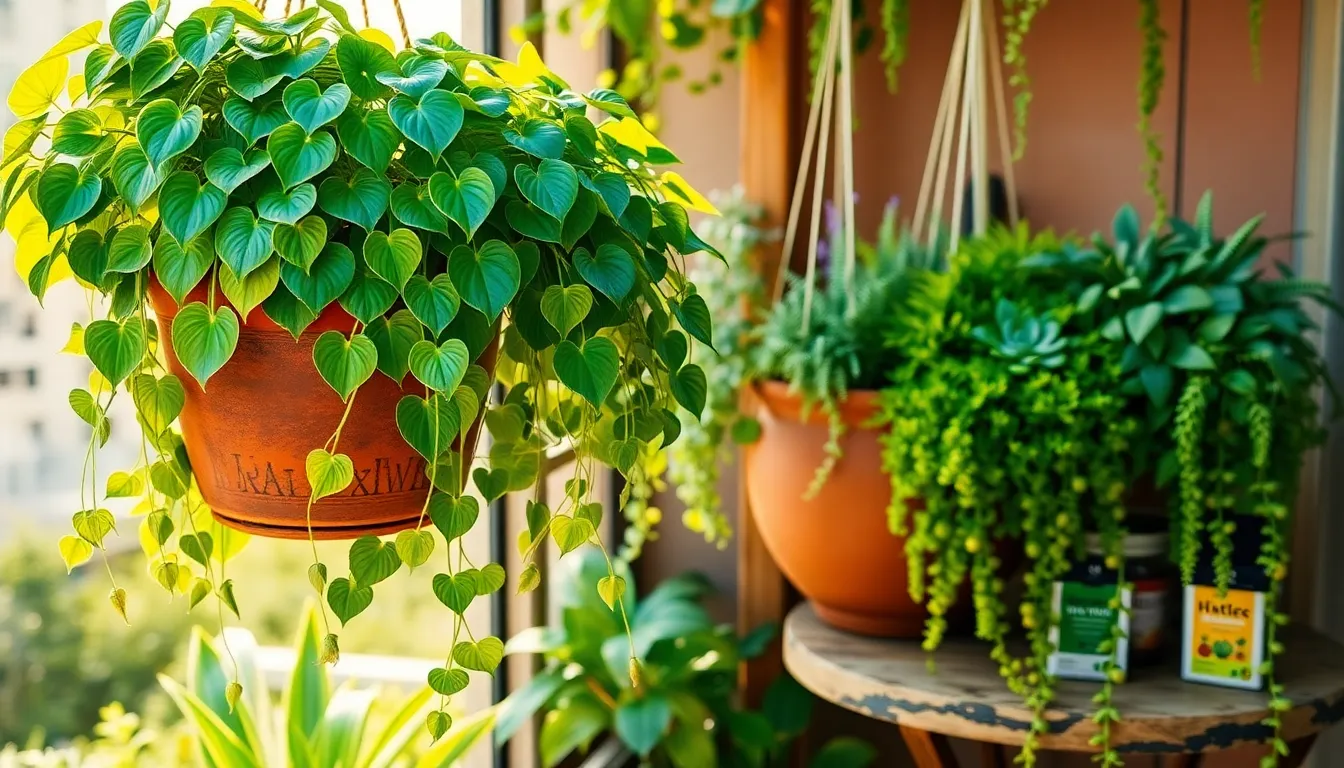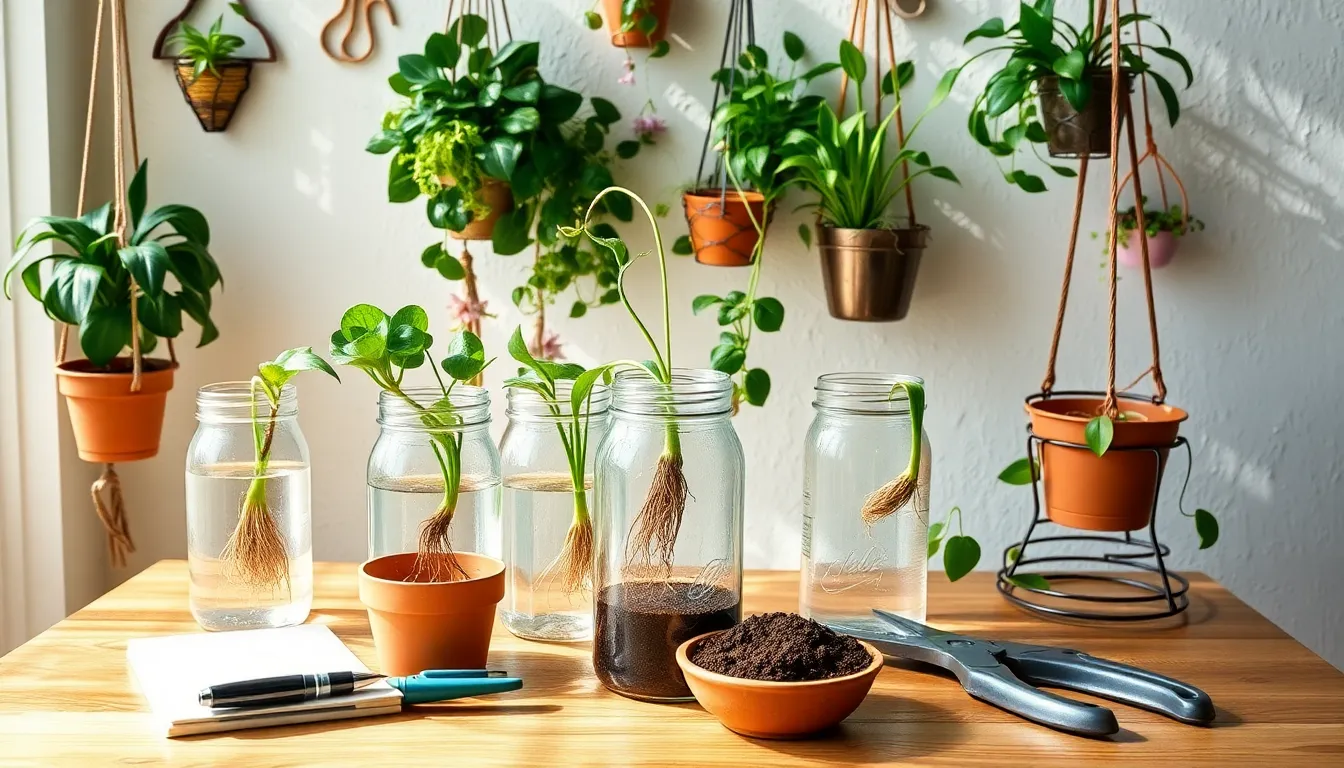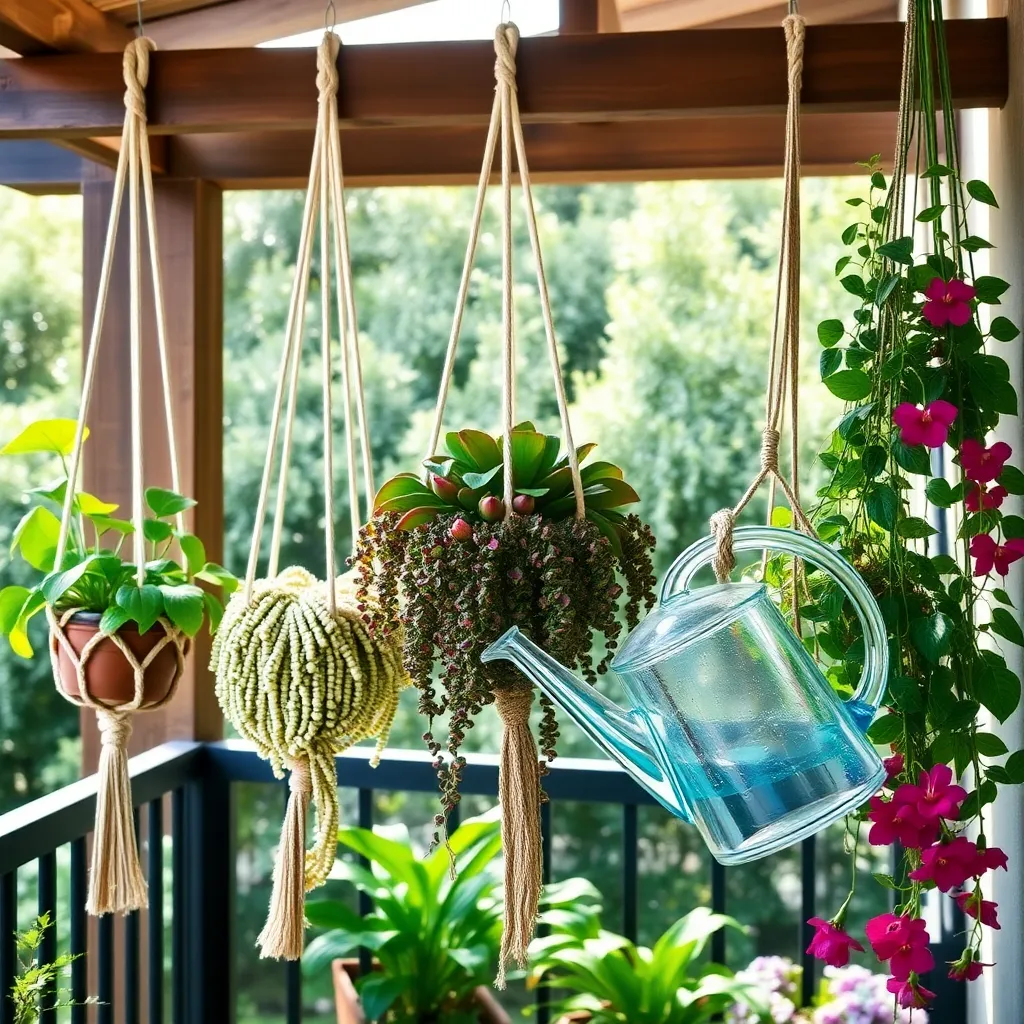Welcome to the lush and lively world of hanging plants, where your home can transform into a verdant oasis with just a little love and care! Whether you’re a budding gardener embarking on your first green adventure or a seasoned plant enthusiast seeking to elevate your indoor jungle, this guide to the 10 best hanging plants for beginners is your ticket to success. These carefully chosen plants are not only stunning additions to any space but also come with a reputation for being forgiving and easy to care for, making them perfect companions for any gardener.
With this guide in hand, you’ll discover the practical joys of gardening as you watch your plants thrive and cascade beautifully from their hanging homes. Each plant on this list offers unique benefits, from purifying the air to adding a splash of vibrant color, all while being remarkably low-maintenance. As you read through these selections, you’ll gain the confidence and knowledge needed to cultivate a thriving indoor garden that will bring you joy and satisfaction. So, let’s embark on this green journey together, where the rewards of successful gardening await you at every turn!
Spider Plant (Chlorophytum comosum) – Low Maintenance and Air Purifying

Spider plants (Chlorophytum comosum) are perfect for beginners due to their low maintenance and adaptability to various environments. These resilient plants thrive in indirect sunlight, making them ideal for hanging baskets in areas with filtered light.
To ensure healthy growth, use a well-draining potting mix like one made for houseplants, which helps prevent root rot. Water the plant thoroughly but allow the soil to dry out between waterings, typically once a week, to keep it thriving.
Spider plants are also known for their air-purifying abilities, removing toxins such as formaldehyde and xylene from the air. This makes them not only a beautiful addition to your space but also a beneficial one for improving indoor air quality.
For more advanced care, consider fertilizing your spider plant monthly during the growing season with a balanced liquid fertilizer. Additionally, if you notice browning tips, increase humidity by misting the plant or placing it on a tray with pebbles and water.
Boston Fern (Nephrolepis exaltata) – Lush Foliage for Shady Spots
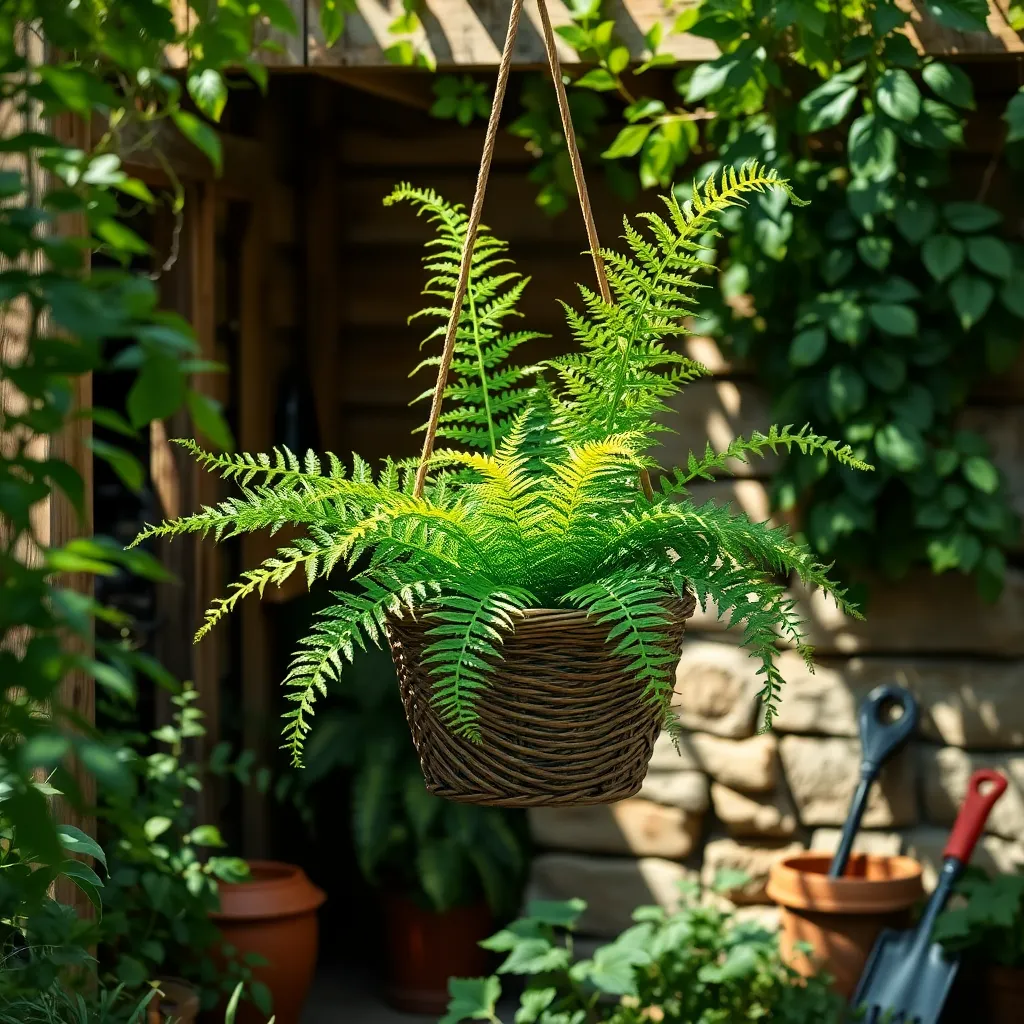
The Boston Fern, known for its lush foliage, thrives in shady spots, making it perfect for low-light conditions. Its graceful fronds add a touch of elegance to any hanging basket, creating a vibrant display that is both eye-catching and soothing.
To ensure your Boston Fern flourishes, place it in an area with indirect sunlight, as direct rays can scorch its delicate leaves. Consistent moisture is key—keep the soil evenly damp but not waterlogged, which helps prevent root rot.
Humidity is a Boston Fern’s best friend; it thrives in moist environments. Consider placing it in a bathroom or kitchen, or use a humidity tray to maintain the required humidity level.
For those looking to take their fern care to the next level, feed it with a diluted liquid fertilizer every month during the growing season. Repot the fern every couple of years to refresh the soil, ensuring it has enough nutrients to support its growth.
String of Pearls (Senecio rowleyanus) – Unique Beaded Appearance
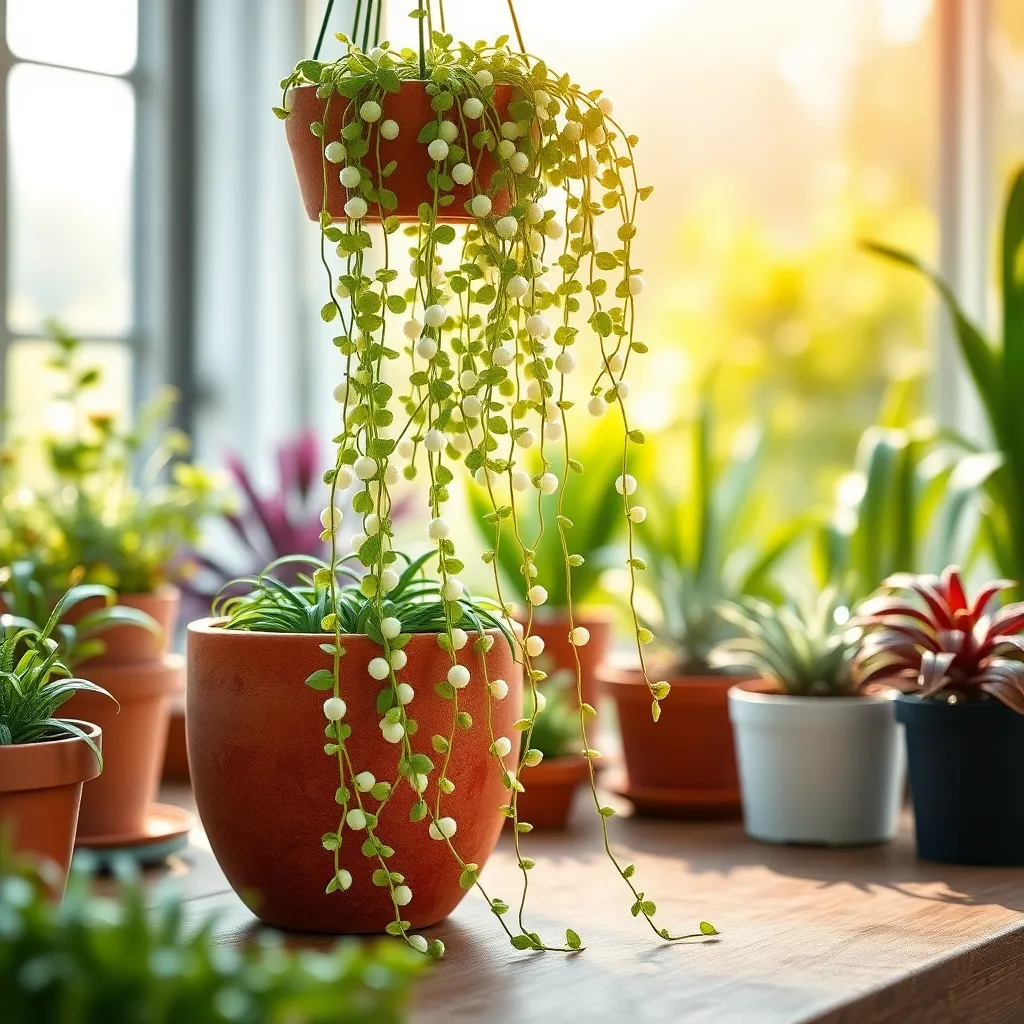
The String of Pearls (Senecio rowleyanus) is cherished for its unique, beaded appearance, making it a delightful choice for hanging displays. Its cascading strands can effortlessly transform a space, adding an element of whimsy and elegance.
This succulent thrives in bright, indirect light, which helps maintain its plump, pearl-like leaves. An east or west-facing window is ideal, but be sure to avoid harsh direct sunlight, which can scorch the leaves.
Watering requires a bit of attention, as this plant prefers its soil to dry out completely between waterings. To achieve this, use a well-draining cactus or succulent mix, and water approximately every two weeks, adjusting based on your home’s humidity levels.
For those looking to expand their collection, String of Pearls is easy to propagate. Simply cut a healthy strand, remove a few pearls near the cut end, and place it on moist soil, ensuring good contact for root development.
Pothos (Epipremnum aureum) – Versatile Vining Plant

Pothos (Epipremnum aureum) is a highly versatile vining plant that adapts well to a variety of indoor environments. Known for its heart-shaped leaves and trailing vines, it makes a stunning addition to any hanging planter.
For beginners, pothos is a forgiving plant that tolerates both low light and brighter conditions, though it thrives best in indirect sunlight. Water your pothos every 1-2 weeks, allowing the soil to dry out between waterings to prevent root rot.
Use a well-draining potting mix, such as one designed for houseplants, to ensure healthy growth. As an advanced tip, consider adding perlite to improve soil aeration and drainage.
To encourage bushier growth, regularly pinch back the stems, which will promote new shoots. Fertilize monthly during the growing season with a balanced, water-soluble fertilizer to keep your plant vibrant and lush.
English Ivy (Hedera helix) – Classic Elegance for Indoors and Out
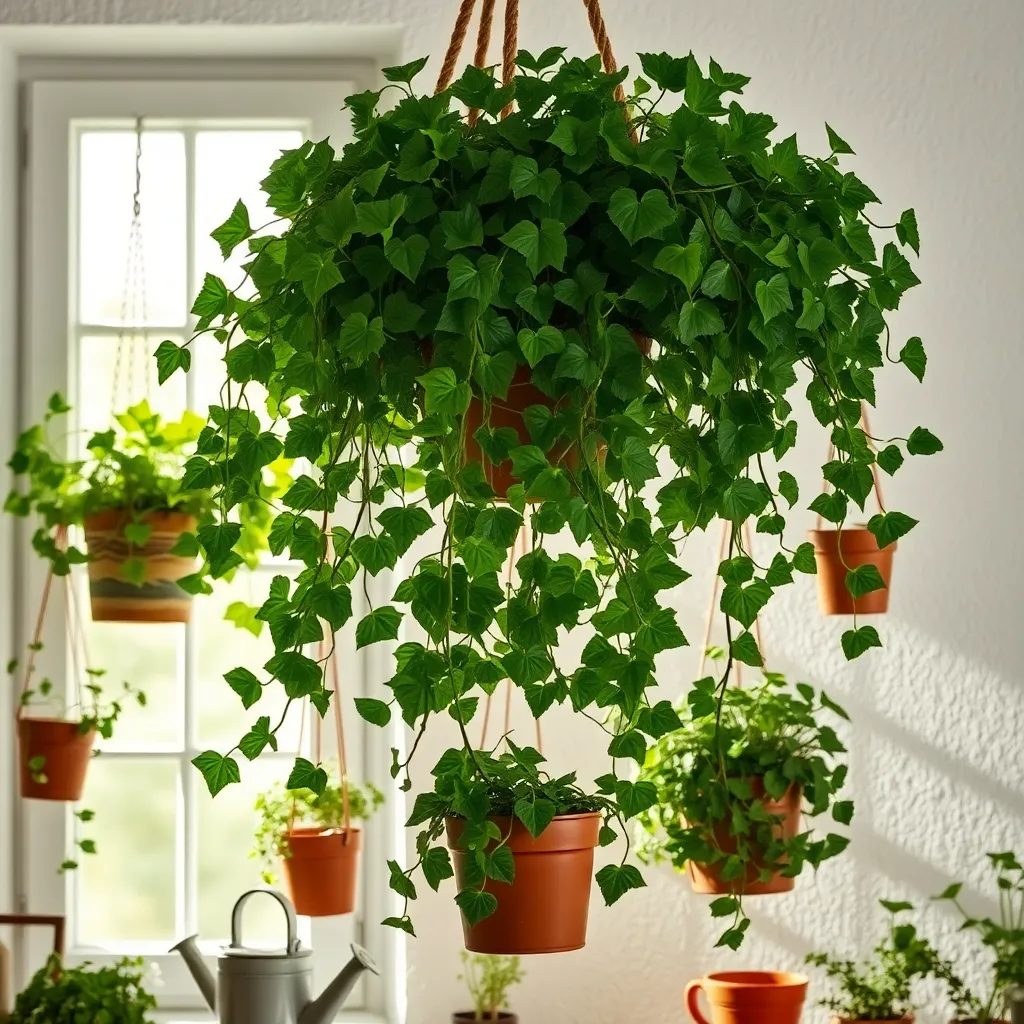
English Ivy (Hedera helix) adds a touch of timeless elegance to both indoor and outdoor spaces. Its ability to thrive in a variety of conditions makes it an ideal choice for beginners looking to expand their plant collection.
To ensure your English Ivy flourishes, provide it with well-draining soil rich in organic matter. Keep the soil consistently moist, but be cautious of overwatering, as soggy roots can lead to root rot.
Place your English Ivy in a location with indirect sunlight to encourage healthy growth. If indoors, a spot near a north-facing window or in a brightly lit room is perfect, while outdoors, a shaded or partially sunny area works best.
Regular pruning helps maintain the plant’s shape and encourages bushier growth. Use sharp, clean scissors to trim back straggly vines, and consider propagating cuttings in water to create new plants.
Burro’s Tail (Sedum morganianum) – Succulent Cascade
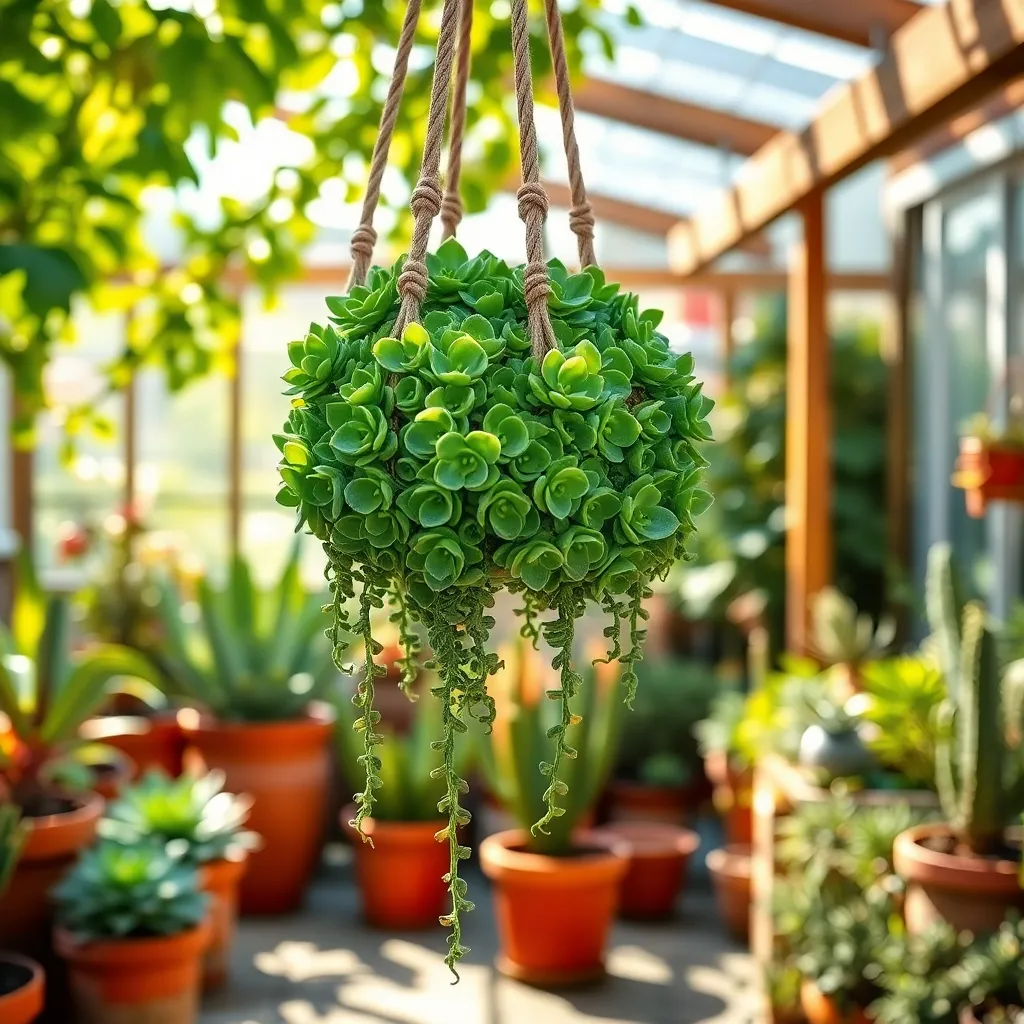
Burro’s Tail (Sedum morganianum) is an excellent choice for beginners seeking a visually striking hanging plant. This succulent is known for its trailing, fleshy stems, which can reach lengths of up to three feet, creating a lush, cascading effect that’s perfect for any indoor space.
To keep your Burro’s Tail thriving, ensure it is planted in a well-draining soil mix, such as a cactus or succulent blend. Water sparingly, allowing the soil to dry out completely between waterings to prevent root rot, which is a common issue with overwatered succulents.
Place your Burro’s Tail in a bright location with indirect sunlight, as direct sun can scorch its leaves. A south or east-facing window is ideal, providing the right balance of light needed for healthy growth without the risk of leaf burn.
Advanced gardeners can propagate Burro’s Tail easily by pinching off a few leaves and placing them on top of slightly moist soil. Be patient, as it can take several weeks for new roots to develop, but the reward of new growth is well worth the wait.
Heartleaf Philodendron (Philodendron hederaceum) – Easy-Care Trailing Leaves

The Heartleaf Philodendron, known scientifically as Philodendron hederaceum, is a beginner-friendly plant with beautiful, trailing leaves. Its adaptability to various light conditions makes it a versatile choice for any indoor space, thriving in both low and bright indirect light.
For optimal growth, use a well-draining potting mix and ensure the pot has drainage holes to prevent waterlogging. Water the plant thoroughly when the top inch of soil is dry, but be careful not to overwater, as this can lead to root rot.
Propagation is simple with this philodendron, making it a great option for those new to plant care. Simply snip a healthy stem just below a node and place it in water until roots develop, then transfer it to soil.
Encourage fuller growth by pinching back the stems, which will promote branching and create a lush appearance. For added humidity, especially in dry climates, mist the leaves regularly or place a humidifier nearby.
Air Plant (Tillandsia) – Soil-Free Wonders
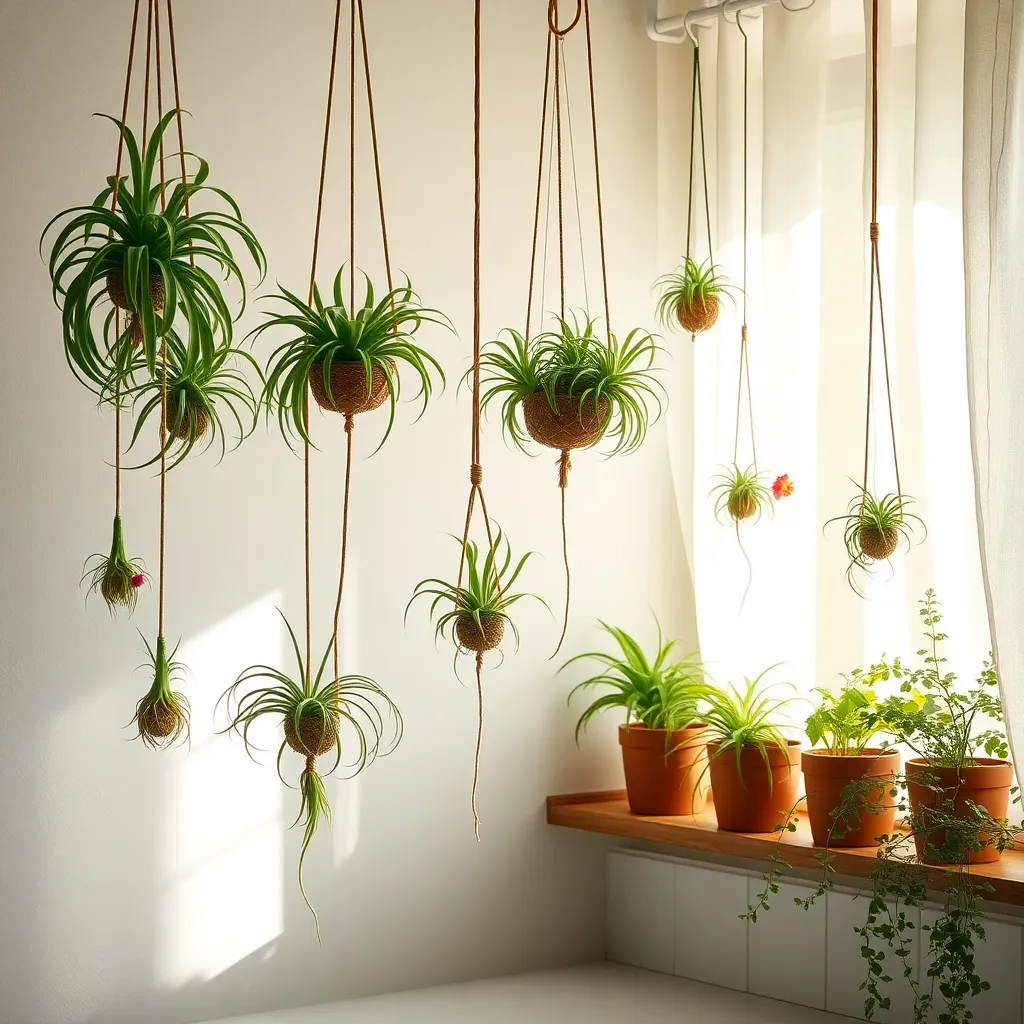
Air plants, or Tillandsias, are a unique choice for hanging gardens, as they do not require soil to thrive. These fascinating plants absorb moisture and nutrients from the air, making them a perfect low-maintenance option for beginners.
To care for your air plants, ensure they receive bright, indirect light, such as near a window with filtered sunshine. Water them by soaking in a bowl of water for 20-30 minutes every week, and make sure they dry completely before returning them to their display.
Beginners will appreciate their versatility, as air plants can be displayed on driftwood, in glass globes, or even mounted on the wall. Advanced gardeners can experiment with fertilizing once a month using a bromeliad fertilizer diluted to half strength to promote blooming.
For those with a busy lifestyle, air plants provide a forgiving option that easily fits into any decor. Avoid placing them in direct sunlight or areas with poor air circulation, as these conditions can stress the plant and lead to dehydration.
Maidenhair Fern (Adiantum) – Delicate Beauty with Minimal Care
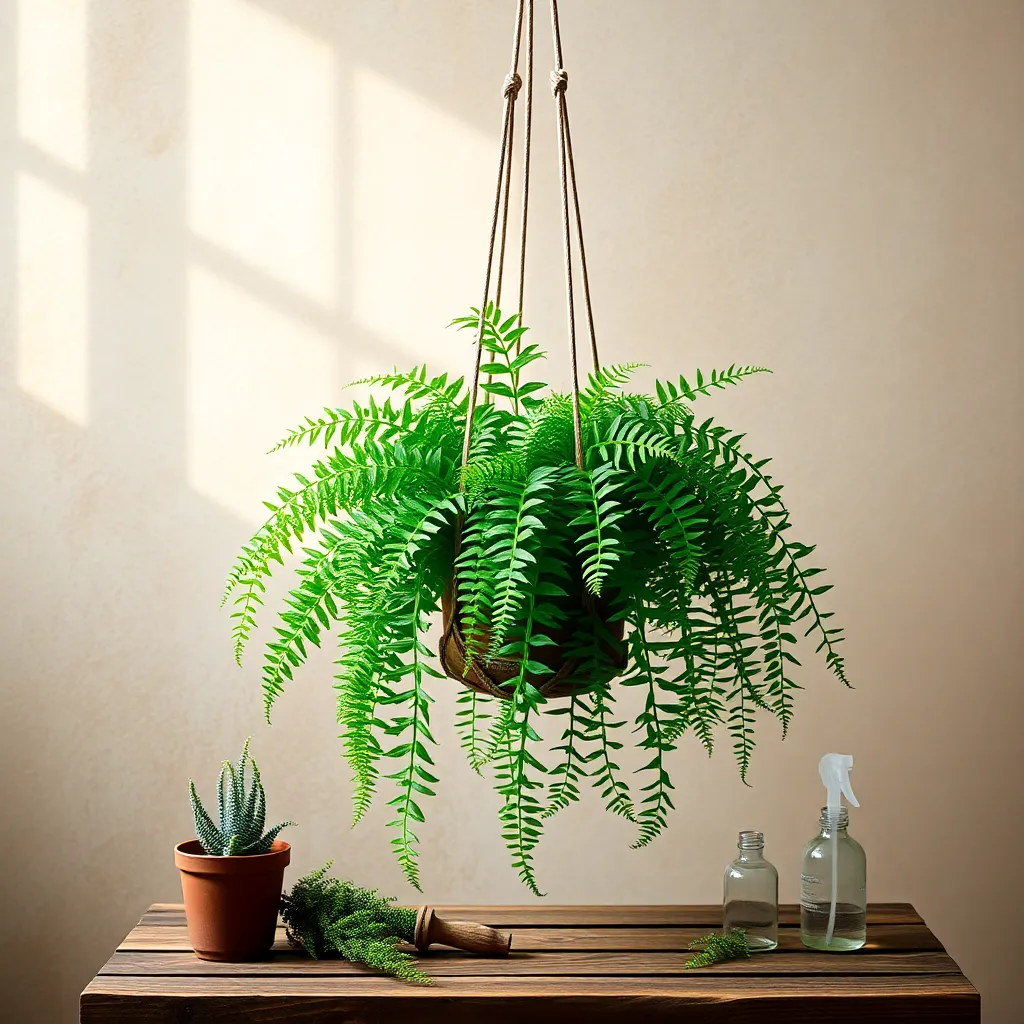
Maidenhair Ferns are a stunning addition to any home, offering a delicate beauty that complements hanging baskets perfectly. Known for their feathery, fan-shaped fronds, these ferns thrive in environments that mimic their natural habitats, making them surprisingly easy to care for with a few simple guidelines.
To keep your Maidenhair Fern healthy, place it in a location with indirect light, as direct sunlight can scorch its delicate leaves. Consider situating the fern in a bathroom or kitchen where humidity levels are naturally higher, emulating the moist conditions these ferns prefer.
Watering is crucial for Maidenhair Ferns, but they dislike sitting in waterlogged soil. Ensure that the basket has good drainage and water the plant when the top inch of soil feels dry, keeping the soil consistently moist but not soggy.
For those looking to enhance their fern care, consider using a peat-based potting mix to maintain the right moisture balance and provide essential nutrients. Regular misting can also help maintain humidity levels, especially during drier months, keeping your fern lush and vibrant.
Fuchsia (Fuchsia magellanica) – Vibrant Blooms for Seasonal Color
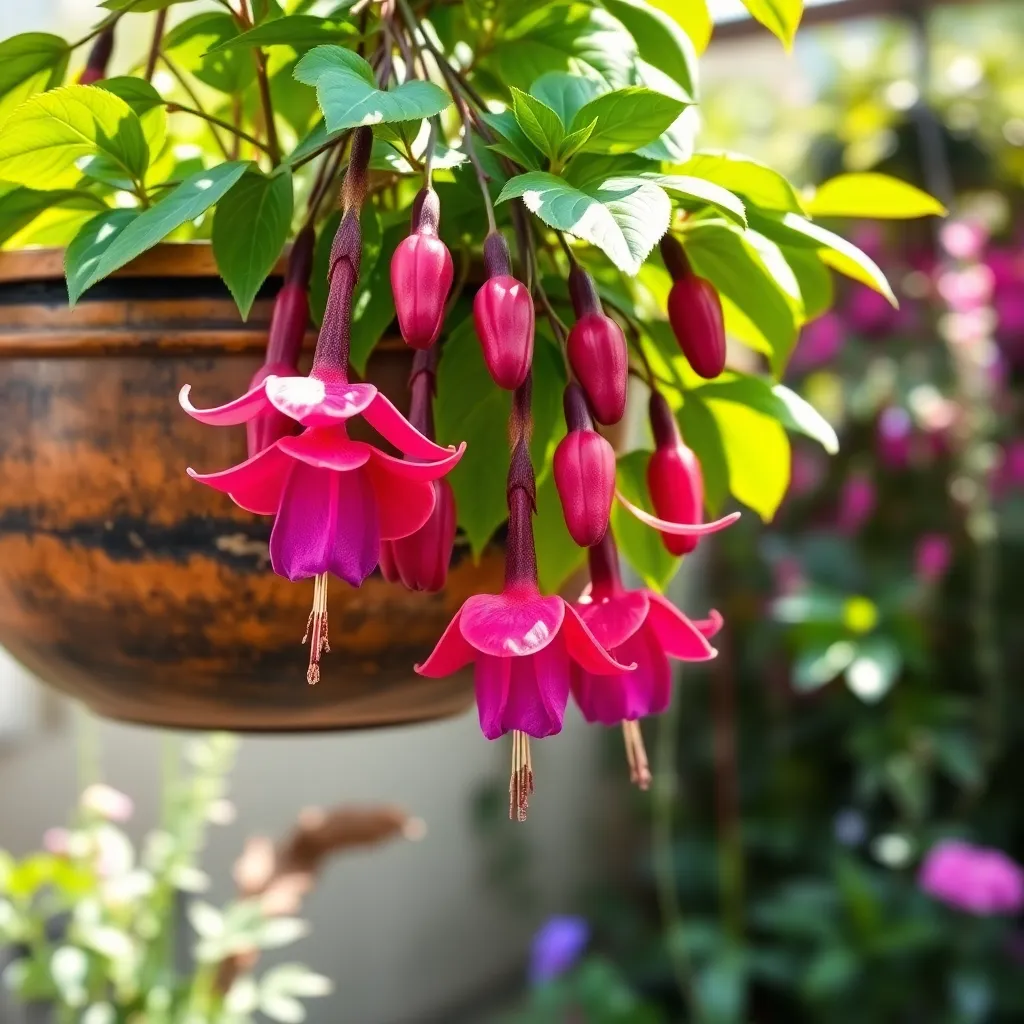
Fuchsia magellanica, known for its vibrant, pendulous blooms, is an excellent choice for those wanting to add a splash of color to their hanging gardens. This hardy species is perfect for beginners, as it thrives in a variety of conditions, offering stunning floral displays from summer through fall.
To ensure your fuchsia plants flourish, place them in a location with partial shade, as too much direct sunlight can stress the plant. Water regularly to keep the soil consistently moist, but be careful not to overwater, as fuchsias are prone to root rot.
Fuchsias prefer well-draining, fertile soil, so consider using a potting mix enriched with organic matter to support their growth. For an extra boost, fertilize your plants every two weeks with a balanced, water-soluble fertilizer during the growing season.
For more experienced gardeners, consider experimenting with pinching back the tips of young shoots to encourage bushier growth and more blooms. Regularly deadhead spent flowers to prolong the blooming period and keep your plant looking tidy.
Conclusion: Growing Success with These Plants
As we’ve explored in ’10 Best Hanging Plants for Beginners,’ nurturing a new hobby like plant care can offer refreshing insights into relationship dynamics. Each plant serves as a metaphor for key relationship concepts: patience with the slow-growing Pothos, adaptability with the resilient Spider Plant, and consistent care with the Boston Fern. These concepts mirror the nurturing required in relationships, emphasizing communication, empathy, and mutual growth.
To turn this inspiration into action, choose a plant from the list to cultivate alongside your partner or loved one. As you care for it, use the opportunity to discuss how these principles apply to your relationship. This shared activity can strengthen your bond and provide a living reminder of your journey together.
Remember, nurturing relationships, like plants, requires ongoing attention and patience. Bookmark this article to revisit these principles whenever you need a reminder or a new plant to add to your collection. By integrating these lessons into your daily life, you set the stage for flourishing, resilient relationships that grow stronger over time. Let’s sow the seeds of care today for a thriving relationship tomorrow.


